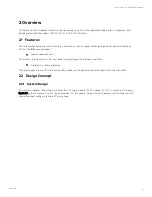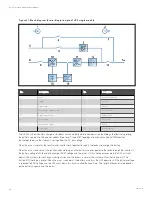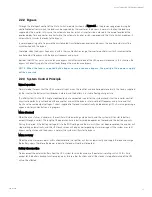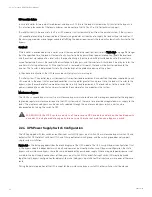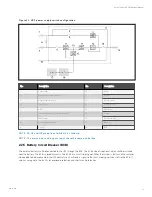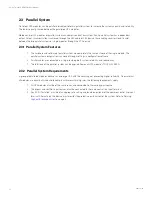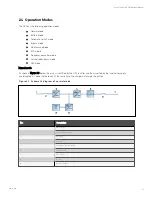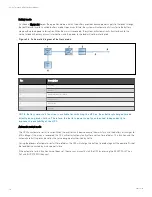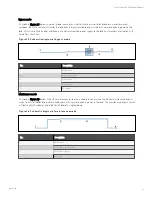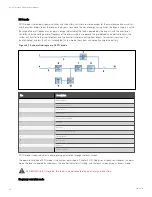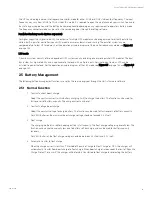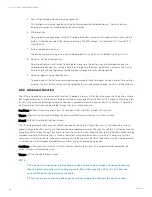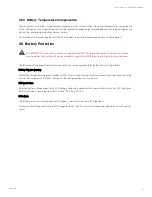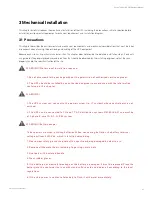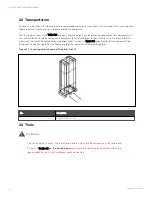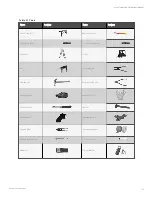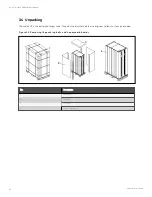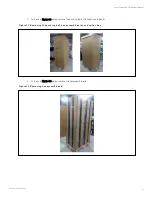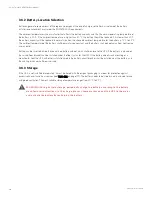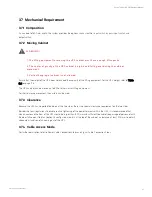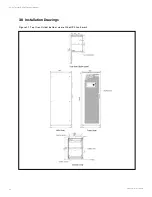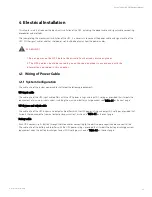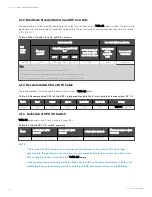
The UPS can be programmed into frequency converter mode for either 50 Hz or 60 Hz stable output frequency. The input
frequency may vary from 40 Hz to 70 Hz. Under this mode, it is required to open the maintenance bypass switch to disable
the static bypass operation, and the battery becomes optional depending on any requirement to operate in battery mode.
The frequency converter mode can be set by the service engineer through the setting software.
Parallel redundancy mode (system expansion)
For higher capacity or higher reliability, the outputs of multiple UPS modules can be programmed for directly paralleling
while a built-in parallel controller in each UPS module ensures automatic load sharing. The parallel system can be
composed of up to four UPS modules. For the operation principle diagram of the parallel redundancy mode, see Figure 8.1
on page 134.
LBS mode
A dual bus system consists of two independent UPS systems, each containing one or more parallel UPS modules. The dual
bus system has high reliability and is applicable to the load with multiple inputs. For single-input load, an STS can be
installed to power the load. For the operation principle diagram of the LBS mode, see Figure 8.5 on page 142 and Figure 8.6
on page 143.
2.5 Battery Management
The following battery management functions are set by the service engineer through the Vertiv firmware software.
2.5.1 Normal Function
1.
Constant current boost charge
Adopt the constant current (within battery charging limit) to charge the battery. The function can be used for
fast recovery of battery capacity. The charge current can be set.
2.
Constant voltage boost charge
Adopt the constant voltage to charge battery. The function can be used for fast recovery of battery capacity.
For VRLA batteries, the maximum boost charge voltage should not exceed 2.4 V/cell.
3.
Float charge
The charging method is used for keeping battery in full capacity. The float charge voltage is generally low. The
function can balance the capacity loss due to battery self discharge, and can be used for battery capacity
recovery.
For VRLA batteries, the float charge voltage should be between 2.2 V/cell and 2.3 V/cell.
4. Automatic transfer to float charge
When the charge current is less than 'Threshold of Equalize Charge to Float Charge' or 0.5 A, the charger will
automatically transfer from boost charge to float charge. When boost charge time exceeds the limit of 'Equalize
Charge Protect Time Limit', the charger will be forcibly transferred to float charge for protecting the battery.
2 Overview
19
Vertiv™ Liebert® APM Plus User Manual
Содержание APM 0250kMK16FN02000
Страница 1: ...Vertiv Liebert APM Plus User Manual 50 250 kVA UPS...
Страница 8: ...vi This page intentionally left blank Vertiv Liebert APM Plus User Manual...
Страница 16: ...1 Important Safety Instructions 8 This page intentionally left blank Vertiv Liebert APM Plus User Manual...
Страница 30: ...2 Overview 22 This page intentionally left blank Vertiv Liebert APM Plus User Manual...
Страница 60: ...4 Electrical Installation 52 This page intentionally left blank Vertiv Liebert APM Plus User Manual...
Страница 73: ...Figure 5 11 Customize the display 5 Operator Control and Display Panel 65 Vertiv Liebert APM Plus User Manual...
Страница 97: ...5 Operator Control and Display Panel 89 Vertiv Liebert APM Plus User Manual...
Страница 154: ...Figure 8 8 LBS port J4 on bypass control module 8 Parallel System and LBS System 146 Vertiv Liebert APM Plus User Manual...
Страница 182: ...11 Service and Maintenance 174 This page intentionally left blank Vertiv Liebert APM Plus User Manual...
Страница 188: ...12 Specifications 180 This page intentionally left blank Vertiv Liebert APM Plus User Manual...
Страница 191: ...Vertiv Liebert APM Plus User Manual...





